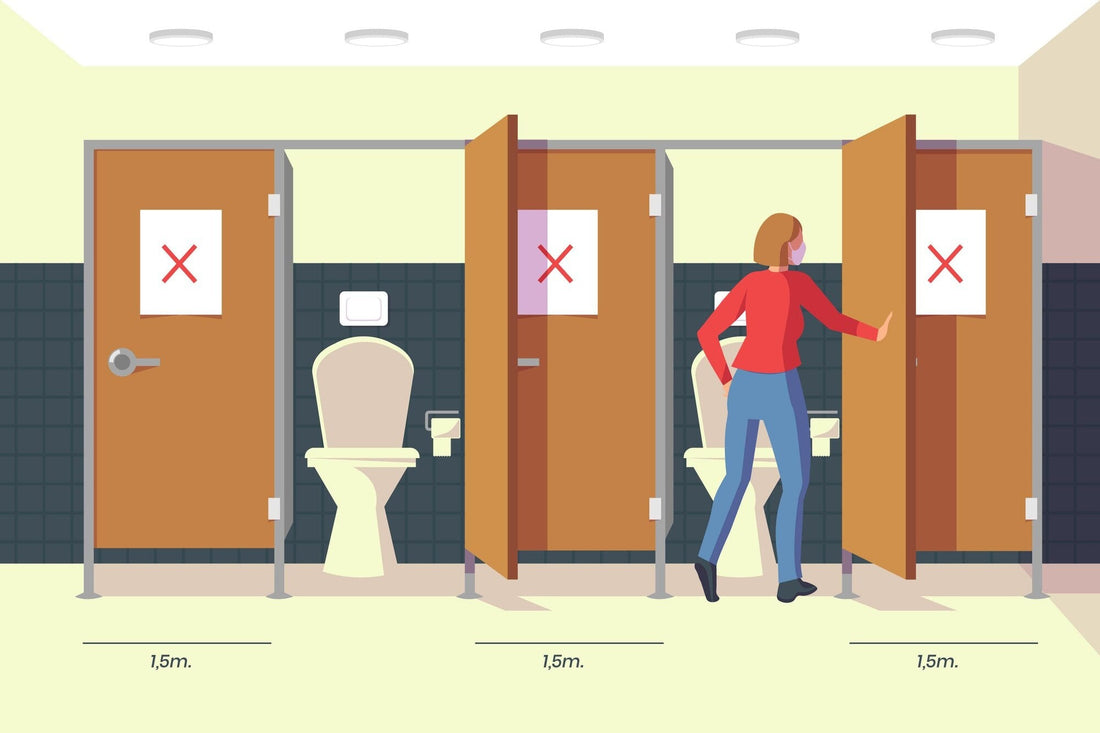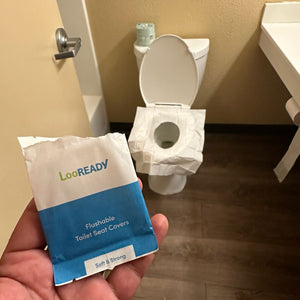We’ve all been trapped in a public restroom, staring at a questionable toilet seat, deciding whether to sit, squat, or just hold it forever.

You could layer toilet paper like a medieval knight crafting armor. Maybe you hover like an Olympic gymnast. Or maybe—just maybe—you believe the old myth that toilet seats are harmless.
But how much of what we believe about public restrooms is actually true? Turns out, a lot of it is nonsense. Let’s bust some common public toilet myths and expose what’s going on in those stalls.
🚽 Myth #1: Hand Dryers Are More Hygienic Than Paper Towels

✅ The Truth: Hand dryers are actually bacteria-blasting cannons.
That warm burst of air feels reassuring, but it’s just blasting restroom bacteria onto your hands like a microscopic confetti party.
-
Studies show hand dryers can spread bacteria up to six feet in all directions.
-
Some research suggests they increase airborne germs by 1,300%!
-
Paper towels, on the other hand, physically remove bacteria from your hands instead of swirling them around.
🔎 What you SHOULD do:
-
Use paper towels whenever they’re available.
-
If forced to use a dryer, rub your hands together thoroughly to remove excess bacteria.
🧻 Myth #2: Covering the Toilet Seat with Toilet Paper Protects You

✅ The Truth: Toilet paper is a germ sponge—just waiting to betray you.
Toilet paper feels like a protective shield, but it’s actually making things worse.
-
Toilet paper is porous, meaning it absorbs bacteria, moisture, and anything floating in the air.
-
If someone flushed before you, toilet plume (aka, airborne bathroom particles) has already settled on that TP.
🔎 What you SHOULD do:
-
Skip the TP layering. It’s not doing what you think it is.
-
Instead, use a LooREADY seat cover—it actually creates a hygienic barrier and dissolves after use.
🚪 Myth #3: The First Stall is the Dirtiest

✅ The Truth: Most people avoid the first stall, making it the cleanest!
The logic goes like this: “Everyone uses the first stall, so it must be gross.” But research says otherwise.
-
Studies show that most people avoid the first stall, assuming it’s dirty, so it actually ends up being cleaner than the middle stalls.
-
The middle stalls get the most traffic, meaning they accumulate the most bacteria.
🔎 What you SHOULD do:
-
Want a cleaner experience? Go for the first stall.
🚽 Myth #4: Hovering Over the Toilet Seat is More Hygienic

✅ The Truth: Hovering increases splashback—meaning more exposure to bacteria, not less.
We get it—you don’t want to touch the seat. But when you hover, a few things happen:
-
You increase the risk of splashing bacteria onto yourself from below.
-
You prevent your bladder from emptying fully, which can lead to discomfort and even UTIs.
🔎 What you SHOULD do:
-
If the seat looks clean, just sit—it’s safer than hovering.
-
If you want extra protection, LooREADY seat covers have got you covered.
🚽 Myth #5: Flushing with Your Foot is More Hygienic

✅ The Truth: Your shoes are probably dirtier than the flush handle.
It feels safer to flush with your foot, but here’s the issue:
-
Your shoes have been on the bathroom floor, meaning they’ve already collected bacteria, urine droplets, and who-knows-what else.
-
Using your foot transfers all that filth directly onto the handle—so if you wouldn’t touch the floor with your hand, why press the handle with your shoe?
🔎 What you SHOULD do:
-
If you’re worried, use a piece of toilet paper to flush.
-
Just wash your hands after flushing, and you’ll be fine.
🦠 Myth #6: You Can’t Catch a Disease from Sitting on a Public Toilet

✅ The Truth: Toilet seats aren’t just uncomfortable—they’re bacteria hot zones, coated in invisible nastiness.
For years, people have been told, "You can’t catch anything from a toilet seat." But new research proves otherwise.
-
Studies have found bacteria like E. coli, norovirus, and staph lingering on public toilet seats.
-
Urine droplets and fecal residue are often present—even if you can’t see them. Every time someone flushes while sitting, tiny splashes land back on the seat.
-
A study from the University of Colorado Boulder used high-tech imaging to show how flushing launches microscopic waste particles into the air. Over time, those particles settle back down onto surfaces—including the toilet seat.
🚽 What does this mean for you?
-
If you sit down without a barrier, you’re coming into direct contact with whatever the last 5, 10, or 50 people left behind.
-
Even if the bacteria doesn’t make you sick, no one wants to sit in invisible pee sprinkles.
🔎 What you SHOULD do:
-
Don’t trust a toilet seat just because it “looks clean.” It’s what you can’t see that matters.
-
Carry LooREADY seat covers for a real protective barrier—not a useless layer of toilet paper.
-
If no covers are available, at least give the seat a quick wipe-down before sitting.
🚽 Bottom line? You could risk it… but why would you?
Final Flush: Myth Busted!

Public restrooms aren’t as terrifying as some myths suggest, but they do have real hygiene risks.
-
Hand dryers? Germ blasters.
-
TP layering? Not helping.
-
Toilet seats? Straight-up coated in bacteria.
The best way to stay clean and safe?
✅ Wash your hands properly.
✅ Use paper towels instead of hand dryers.
✅ Keep LooREADY with you at all times.

